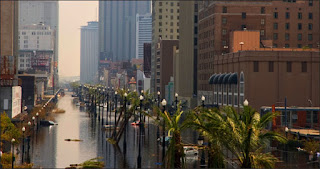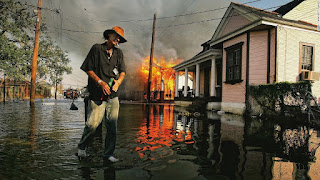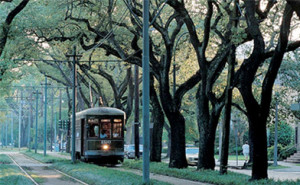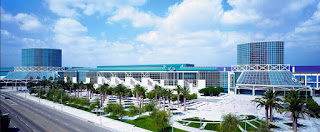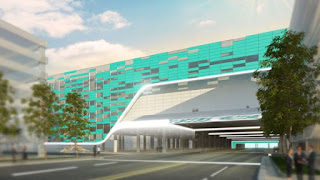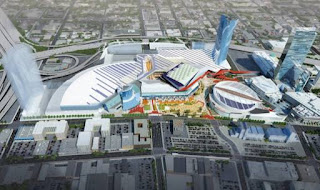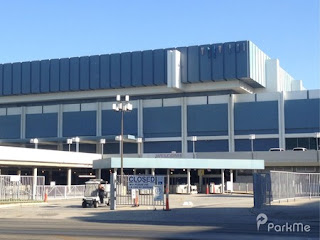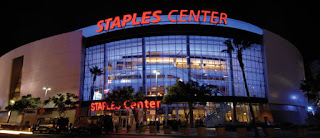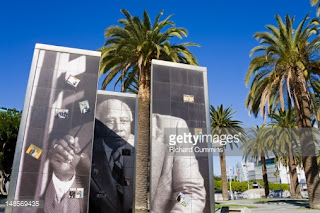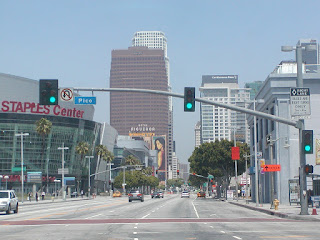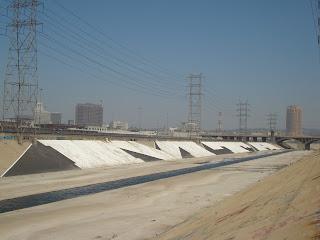http://losangelesurbdezine.com/2015/07/14/areyner-banham-mike-davis-and-the-discourse-on-los-angeles-ecology/
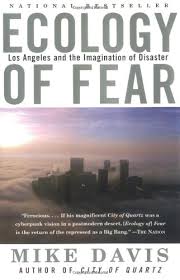 |
Ecology of Fear:
Los Angeles and the Imagination of Disaster
amazon.com
|
Hello Everyone:
The City of Los Angeles is our focus today. Specifically, we are going to talk about two seminal books written about the city's ecologies:
Los Angeles: The Architecture of Four Ecologies (1971) by Reyner Banham and
Ecology of Fear: Los Angeles and the Imagination of Disaster (1998)
by Mike Davis. Guiding us in our discussion will be Jonathan P. Bell's article for
UrbDeZine Los Angeles, "Reyner Banham, Mike Davis, and the Discourse on Los Angeles Ecology." Mr. Bell writes,
...Banham's Los Angeles: The Architecture of Four Ecologies
celebrated L.A.'s idiosyncratic built form and history. Defying critics who wrote off Los Angeles as a cultureless city without history. Banham argued that L.A.'s four ecologies-the beaches, the foothills, the flatlands, and the freeways-made the traditional city obsolete...Mike Davis responded with Ecology of Fear: Los Angeles and the Imagination of Disaster
, an apocalyptic polemic chronicling what seems to be L.A.'s normative order of chaos. According to Davis, Los Angeles is ceaselessly on the verge of destruction, by natural disasters..., the human hand...,or superlative forces....
Yet, somehow, Los Angeles continues to survive.
 |
Los Angeles:
The Architecture of Four Ecologies
emerson.arch.ethz.ch |
In a number of ways, these books bracket a body of literature on Los Angeles. If Mr. Banham's book is a celebration of the pinnacle of post-war boosterism, then Los Angeles, Mr. Davis's tome is a frighteningly cautionary critique of the city. (de Turenne,
Salon, Dec. 1998) In short, the dire warnings of pending doom in Mr. Davis's book cancels out the joyfulness in Mr. Banham's work. However, Mr. points out, "...this interpretation would be misleading. In fact, reading the texts side-by-side, one sees a striking correlation between their ecologies." He describes this correlation as symbiotic. The compliment each other, providing a counterpoint to one another. Together, they give the reader a "...holistic, sobering and revealing alternative history of Los Angeles."
Four Ecologies and the Ecology of Fear
The beach towns that dot the Southern California coastline comprise Mr. Banham's
Surfurbia, his first ecology famous for the sun, the surf, and the suburbs.
Surfurbia stretches from Malibu at the western-most edge towards the Balboa peninsula at the southern-most point, distinguished by two modernist masterpieces: The Hunt House, by Craig Ellwood (1955) and the Lovell Beach House by Rudolph Schindler (1926) in Newport Beach. (Banham, 21, 1971)
 |
The Hunt House (1955)
Craig Ellwood
Malibu, California
ncmodernist.org |
The coordinates are worth mentioning for two reasons:
Firstly, Surfurbia transcends the Los Angeles/Orange County boundary. Banham's cross-jurisdictional definition of Los Angeles is one of the first to declare that L.A. neither begins nor ends at the city limits. As Banham argues, Los Angeles is a regional metropolis and more than a city proper. Secondly, rather than defining Los Angeles according to traditional municipal boundaries, Banham uses two modernist landmarks to demarcate Surfurbia...
In this case, the Lovell Beach House in Newport Beach, California by Rudolph Schindler and the Hunt House in Malibu, California by Craig Ellwood.
 |
The Lovell Beach House (1926)
Rudolph Schindler
Newport Beach, California
en.wikipedia.org |
Reyner Banham begins his tour through
Surfurbia in tony and very private Malibu beach. Mr. Banham does not find the fact that shore is cut off from public access controversial because he believes that the private shoreline is the result of building large houses on small lots, which effectively restricted the public inlets between the beach and the Pacific Coast Highway. (22) In the wake of the contemporary cries for more public access to the beach, Mr. Banham's defense of privacy makes him sound like an apologist. Yet, it does not seem right to judge his arguments by today's standards, because he does acknowledge the importance public access, observing that Santa Monica beach is wide open to the public. Mr. Bell writes, "Indeed, the notion of accessibility is important to Santa Monica's history. Banham maintains that Santa Monica Canyon 'is the point where Los Angeles first came to the Beaches.'" (26)
 |
Santa Monica State Beach
en.wikipedia.org |
Since early efforts to create a port in Santa Monica Bay, Angelenos have been flocking to this beach community. Reyner Banham believes that the attraction is the city's
distinctive civic atmosphere. (28) Moving south, Mr. Banham cruises past, the then, decaying Venice community which he describes as having
the charm of decay, but this will almost certainly disappear in the redevelopments that must follow... (28) As continues driving south, Mr. Banham passes through the South Bay communities of Manhattan Beach, Redondo Beach, and Hermosa Beach-a cluster of cities from which the word
Surfurbia emerges. It is here that he identifies the signifiers of this ecology: the boardwalk and surfboard. As Mr. Banham puts it, '
the concrete boardwalk'...characterizes mile after mile of the true surfurbian shore. (30) He observes the boardwalk's inner face of cottages, hotels, and restaurants, buttressing the seawall as the surfboard, the
prime symbols and functional artefact of these beaches where California surfing began. (31)
 |
Redondo Beach Pier
Redondo Beach, California
funvida.com |
Reyner Banham waxes prosaic over the surfboard's role in
Surfurbia,
Leaning on the sea-wall or stuck in the sand like plastic megaliths, the concentrate practically the whole capacity of Los Angeles to create stylistic decorative imagery, and to fix those images with all the panoply of modern visual and material techniques-and all, remember, in the service of the preferred local form of noble savage, pitting his nearly naked muscles and skilled reactions against the full force of the 'mighty hulking Pacific Ocean.' (Ibid)
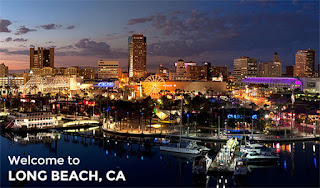 |
Long Beach, California
cobaltautoservice.com |
The surf side idle quickly changes beyond the
Surfurbian cities. In posh Palos Verdes, "..the prominent promontory topped with 'exclusive residential suburbs' disrupts
Surfurbia's boardwalk urbanism." Further south, in Long Beach, Reyner Banham writes,
the shoreline could be mistaken for a European waterfront save for the oil rigs clumsily encased behind decorative screens. The Surfurbian city then reemerges in Huntington Beach, "the loosely developed surfer's paradise" across the Orange County line. (34)
It is in Orange County, that Mr. Banham aimed his critic's eye at his first ecology. Targeting the faux-Italian Huntington Pacific apartments, he observes,
[I]t is literally perched on the shore, is surrounded by a wall and is guarded by a uniform cop. If it heralds the subdivision of the shoreline...into a series of fortified private segments, it is a sorry portent for surfurbia. (35) Mike Davis could not agree anymore with this assessment.
 |
| Different "Keep out" signs in Malibu |
Surfurbia rebuttal
Mike Davis also assigns Los Angeles distinct boundaries. This is particularly true in his observations about the beaches, which extend from Santa Barbara to San Diego. For Mr. Davis, it is a darker picture. In his estimation, the restrictive beach access is a product of zealous developers's land grabs during the 1920s open space debates. In contrast to Mr. Banham's lovely image of Malibu, Mr. Davis argues, "...that developers set out to privatize public space, especially the beaches, in order to maximize profits at the public's expense." Specifically,
As early as 1928, 'barely half an inch of publicly owned beach frontage was left for each citizen of Los Angeles County. (Davis, 65, 1998)
The tactic of restricting beach access is particularly evident in Malibu where reactionary residents have denigrated beach access advocates as "radicals" and equated their advocacy as unconstitutional property seizures. (135)
Mike Davis's version of L.A. beaches is a battleground fraught with class and racial overtones, not the laid back version of Reyner Banham's
Surfurbia.
 |
Joe Legotte sits in a chair during a winter storm
San Diego, California
news.discovery.com |
Traveling up and down the coast, the signs of impending disaster are everywhere.
Surfurbia is a favorite target of Nature's wrath. Jonathan Bell frighteningly writes, "During winter, heavy rains wash an assortment of deadly snakes from adjacent hills into the ocean and the waves bring them back onshore in droves..." No doubt something straight out of a horror movie,
Surfing Snakes anyone? For Mr. Davis, the snakes are messengers from angry Gabrielino Native American deities sent
In times of ecological crisis...(as) the avengers of transgressions against nature. (197-99) Revenge of nature is the overarching theme in
Ecology of Fear and the beach communities are the primary location for Mother Nature to visit her wrath upon L.A. Mr Bell writes, "The book opens with a description of the Hawaiian Kona storm system that hits L.A.'s coast at least once a decade. According to Davis, the storm
carries several cubic kilometers of water, or the the equivalent of half of Los Angeles' annual precipitation. (5) Of course, the odd Hawaiian storm system is nothing in comparison to the waterspouts that frequently plague
Surfurbia. Waterspouts were spotted in the Santa Monica Bay as early as 1937 but have largely gone unreported in the media despite the onshore havoc they wreck.
 |
Oakwood section of Venice Beach, California
kcet.org |
Mike Davis's images of doom and disaster are a bucket of ice water on Reyner Banham's pastoral
Surfurbia. Mr. Banham's beach is place of endless pleasure, while Mr. Davis's beach is another combat zone in a volatile Los Angeles. Moreover,
Surfurbia's location appears to exaggerate racial and class difference, something Mr. Banham omits is his
Four Ecologies. The Oakwood section of Venice Beach is an example of what can happen with race and class tensions collide with gentrification. Mr. Bell writes, "Low-income, mostly African-American residents of Oakwood are being priced out of the neighborhood by similar exclusionary interests that run Malibu." Typically, it is the long-term residents that get displaced from their community. However, in a perverse sense of poetic justice, the long-term residents are getting themselves out of the path of the danger about to be visited upon the elite who are gentrifying the neighborhood.
 |
Chemosphere (1960)
John Lautner
Photograph courtesy of Josh White
Los Angeles, California
egarch.net |
Foothills
The next stop in our tour through Los Angeles's ecologies is the Foothills. They are the hillsides that ring the greater L.A. Basin. The Foothills's coordinate lie "...the L.A. River just north of downtown, as the starting point, the western foothills run from Silver Lake, over Beverly Hill and to the Palisades. To the east, they encompass Highland Park, Pasadena. Sierra Madre and Monrovia. In the South Day, the communities of Palos Verdes and Rolling Hills define the southern foothills." Reyner Banham offers his politically tinged thoughts when singling out Baldwin Hills as "a planned development wrongfully supported
restrictive covenants in the title deeds which excluded Negroes and Mexicans." (Banham, 80) What brings these spread out hillside communities is their planning (or lack of) typology. Mr. Banham writes,
That is what the foothill ecology is really all about: narrow, tortuous residential roads serving precipitous house-plot that often back up directly on unimproved wilderness, (81)
 |
Chemosphere interior
takesunset.com |
Like an explorer discovering new land, Mr. Banham wanders onto recognizable movie locations, hidden modernist gems, and lavish castles. These sites are almost hidden away, behind a curtain of laurels that allow
instant privacy, essential to the fat life of the delectable mountains. (82) However, amid the bucolic hideaway are the seeds of it demise. He writes,
In so far as this ecology is threatened it is threatened by its own desirability more than anything else; a desirability attested by the appearance of small two- or three-storey apartment blocks balanced awkwardly over impossibly precipitous pocket handkerchief sites... (84)
The mad dash to develop whatever available hillsides remain has led to builders taking the the topography for granted. Other times, the topography inspires unique solutions such as John Lautner's masterpiece Chemosphere, "perched atop a concrete pillar embedded deep into the forty-five degree Hollywood Hills." Other times, as Mr. Banham observes,
the un thought-out solution-if solution it is-simply takes a standard developer's tract-house and perches it in mid-air on steel uprights... (86) This or just bulldozing the hillside.
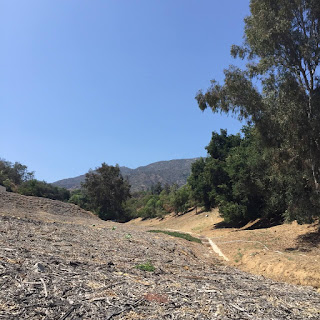 |
The foothills above Bradbury in the San Gabriel Valley
Photograph courtesy of Jonathan P. Bell
losangeles.urbdezine.com |
Given Los Angeles's propensity for rapid urban development, transforming the Foothills is almost a given, the natural outcome in a place of "de facto urbanization." Be that as it may, Jonathan Bell observes, "...what differs most strikingly between piecemeal and hyper development in the foothills is the scale of the resulting projects." Mr. Banham tells us,
(T)he customary methods of working and designing did not alter the profiles of whole hills, exalt valleys, or make waste of places plain, in the way that large-scale mountain cropping does. (89)
The problem is enhanced by the Foothill's susceptibility to mudslides thanks to pathetic run-off and ground-level undercutting. This point allows Mr. Banham the rare opportunity to agree with L.A. Moroses (the Greek deity of doom). He notes that given the dangers of rapid hillside development,
(I) t becomes difficult not to entertain apocalyptic queries about how some of these developments are going to settle down and where! Such large-scale triflings with the none too-stables structure of an area of high earthquake risk seems more portentous as a direct physical risk to life and limb that as a lost ecological amenity. (91) Then, of course, there is Mike Davis's central theme of Los Angeles's apocalyptic demise in
Ecology of Fear.
 |
Malibu Fire 2007
ktla.com |
Foothills rebuttal
Mike Davis is also concerned about the threat of natural disasters but from a less circumspect point of view. In Mr. Davis's opinion, Foothill development is an insult to L.A.'s already precarious natural environment. In response to this affront, Mother Nature is fighting back with annual firestorms that make the case (but do not) against large-scale hillside development The lush hillsides of Malibu are not, oddly enough, a favorite inferno site. Mr Davis writes,
The rugged 22-mile coastline is scourged, on average, by a large fire (one thousand acres plus) every two and half years, and the entire surface areas of the western Santa Monica Mountains has been burnt three times over this century. (Davis, 86) Comforting thought.
Further, Mr. Davis points out that in thirty years five firestorms have burnt over 1,000 luxury homes, sometimes striking the same unfortunate homeowner twice. (98) You would think some people would learn? Nevertheless, after the devastating 1993 Malibu Fire resulted in $1 billion in damage but did that stop residents from rebuilding and moving back in? No way. In fact, the angry residents demanded more fire protection, mistakenly supported as a policy of total fire suppression. While this strategy soothed the residents, Mr. Davis wrote,
...has been a tragic error because it creates enormous stockpiles of fuel for additional and inevitable fires. (101)
 |
Chupacabra
Drawing by relkavin
relkavin.deviantart.com |
If firestorms are not dangerous enough for hillside dwellers, the Foothills are home to the threat of native wild animal attacks. Los Angeles's rugged terrain, coupled with rapid development, is one explanation for the uptick in the number of annual attacks. Mike Davis writes,
First of all, metropolitan Los Angeles, now bordered primarily by mountains...rather than by farmland as in the past, has the longest wild edge, abruptly juxtaposed tract houses and wildlife habitat, of any major nontropical city...Second, this is primarily a mountain edge... (202)
Recently, the number of wild life attacks has become more brazen and common, implying that the animal kingdom is done with L.A.'s persistent development. The roster of real and imagined "When Animals Attack:" includes: mountain lions. black bears, coyotes, African bees, and chupacabras of Latin America mythology. In short, Messrs. Banham and Davis do express sincere concern for out-control development in the foothills. However, Mr. Banham sees it as an inevitability and should proceed with caution while Mr. Davis sounds the alarm, no hillside is safe. They both could be right but they reveal an inherent weak point in Los Angeles's Foothill ecology.
 |
Duarte Historical Society and Duarte Museum
Rancho de Duarte, California
ranchodeduarte.org |
Plains of Id
The Plains of Id sounds like something straight out of a Sigmund Freud textbook. Instead, the Plains of Id are Reyner Banham's descriptor for the flatland communities which make up the bulk of Los Angeles out which, "the city's primal development urge originates." Mr. Banham writes,
These central flatlands are where the crudest urban lusts and most fundamental aspirations are created, manipulated and with luck satisfied. (Banham, 143) Mr. Banham's dissection of the Plains of Id begin in the San Gabriel Valley. Following Foothill Boulevard east, he retraces the progress of suburbia to its foundation in eastern L.A. County-the Azusa-Duarte area. In 1851 Henry Dalton first began subdividing his
rancho into smaller farm tract which produced the Duarte township. The subdivisions spread west as settlers came to L.A. via the Southern Pacific and Santa Fe railroads. Railroad was the crucial mechanism that drove plains development. As the rail lines extended north and south, new opportunities for suburbanization appeared. Reyner Banham points out that the San Fernando Valley and Orange County were products of railroad expansion.
 |
The Hauser
Los Angeles, California
lomo.architectureburger.com |
Other than the odd urban monument-eg. the Watts Tower-that might distinguish one suburban plain for another, Mr. Banham observes
...the landscape tends to disappear into 'an endless plain endlessly gridded with endless streets, peppered endlessly with ticky-tack houses clustered into indistinguishable neighborhoods, slashed across by endless freeways that have destroyed any community spirit that many once have existed. (Ibid)
This description of the plains could explain the ceaseless hunger for development but "what else is there to do by grow?" Jonathan Bell writes, "But suburban development does not always translate into beautifying the plains." To a great extent, developing the plains results in a confusing and lackluster built environment. For example, while passing through the San Gabriel Valley, Mr. Banham points out a
substantial four-lane highway will apparently stop at a white fence and a grove of trees, throwing off the traveler's locational awareness. (150)
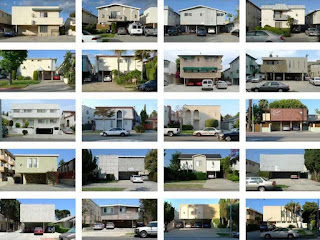 |
Dingbat apartments
Los Angeles, California
architizer.com |
Visiting West Los Angeles, he identifies the ubiquitous dingbat architectural typology:
...two-story apartment building with a bland street-facing facade, uninspiring architectural detailing, and required on-site covered parking spaces tucked under rectangular overhanging bedrooms propped up on thin steel pipes. (157-9) He comes to the conclusion, complaints aside, these suburban "anomalies" should be celebrated as a unique L.A. ecology. The never ending flatlands beckon the Eastern and Midwestern transplant and were essential to the formation of the modern day metropolis. Moreover,
this undistinguished townscape and its underlying flat topology were quite essential in producing the distinctively Angeleno ecologies that surround it on every side. In a sense it is a great service area feeding and supplying the foothills and beaches... (155)
 |
Watts Tower
Watts, California
flickr.com |
Plains of Id Rebuttal
Reyner Banham presents a relevant analysis of the Plains of Id's physical design but omits the ecology's sociopolitical challenges. In some cases, such as the City of Duarte, this omission might be warranted, but in the more marginalized and impoverished communities of the Plains, this omission glares brightly. For example, Watts, Mr. Banham rightly focuses some attention on the celebrated Watts Towers and their strategic location on the transportation grid but fails to provide an analysis of the political climate. This is in light of the fact, the City of Los Angeles just marked the fiftieth anniversary of the Watts Uprising, which took place six years before
The Architecture of Four Ecologies. Jonathan Bell rightly asks, "How can the 1965 Watts Uprising go unmentioned in this analysis when the rebellion itself sprang from the particularities of the local ecology?" Answering his own question, Mr. Bell writes, "The Watts Uprising was the product of mounting urban inequalities that included aversion towards community development in Black communities." Contrast this with the pathos that drives the "subdivisionist lust that drives the plainspersons' desire...like the desire to disinvest when communities lack amenities and resources to sustain profits." In Mr. Banham's sanitized vision of suburbia, dingbat architecture, not inequality is the main concern. Naturally, Mike Davis has a grimmer outlook.
 |
Custom house in Cheviot Hills
Los Angeles, California
housesellerla.com |
Mike Davis's disturbia image is a counterbalance to the genteel sociopolitical of Mr. Banham's idyllic Plains of Id. Mr. Davis's image of suburban development has more ominous consequences. Suburbanization has stolen the last remaining scraps of open space in Los Angeles. According to Mr. Davis
While the population of the Los Angeles region grew by 45 percent from 1970 to 1990, its developed surface area increased by 300 percent. (Davis, 86)
One the byproducts of suburbanization is the increased privatization of public space. One positive result is "a sense of safety given the array of security technologies deployed to monitor users' activities..." However, Mr. Davis argues, it is a fallacy to think the suburbs are safer than downtown
.
From the dusty roads of Lancaster to the sleepy streets of Orange County, the plains are ground zero for what Davis call the "low intensity" urban race war between neo-Nazi skinhead and unsuspecting minority groups. (405-11)
This low-intensity race war has been fueled, over the last twenty years by the increasing migration of minorities to previously all White suburbs. Circling back to Watts and the persistent myth of the inner-city as a hotbed of crime, violence, blight, and racism-think again and look to the suburbs.
 |
Under the I-110/US 101 Freeway
Downtown Los Angeles
Photograph courtesy of Jonathan P. Bell
losangeles.urbdezine.com
|
Autotopia
The sprawling freeway system that spreads itself across Los Angeles is the image for Reyner Banham's Autotopia, his last and most infamous ecology. It is also what Mr. Banham points to when he made his most controversial argument, "L.A.'s heavily trafficked pollution-causing monolithic freeway system is
not a source of consternation, but rather a praiseworthy feat of planning ingenuity." If you have ever driven the L.A. freeway, you would probably be incredulous at this statement. Mr. Banham explains,
...the freeway system in its totality is now a single comprehensible place, a coherent state of mind, a complete way of life, the fourth ecology of the Angeleno. (Banham, 195)
In Reyner Banham's opinion, the freeways, despite their unique ability to make the average Angeleno question their existence, liberates the driver from the congested streets that compose the typical urban grid. Jonathan Bell writes, "Here Banham opens much for debate. He wisely addresses the traffic stereotypes early on. He does not deny that traffic is problematic in Autotopia, but he downplays its extent in comparison to European standards." From
Architecture of Four Ecologies,
(T) freeway system can fail; traffic jams can pile up miles long in rush-hours or even on sunny Sunday afternoon, but these jams are rarely stationary for as long as European expectations would suggest. (197)
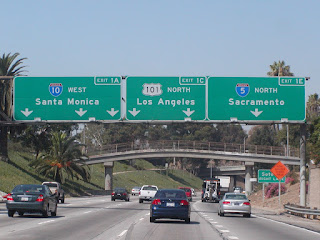 |
State freeway junction
Los Angeles, California
flickr.com |
Jonathan Bell faults Reyner Banham for not defining what "European expectations" are nor does he explain why L.A. drivers would consider using an international traffic standard as a basis for comparison. This leaves the reader thinking that Angelenos have no business complaining about traffic in "the land of eternal sunshine and smog." Reyner Banham admits that the smog is damaging, he ultimately concludes that smog is
psychologically or no, most Angelenos (drivers) are neither retching with smog nor stuck in a jam... (198)
Reyner Banham seems to blithely argues that traffic and smog are of little concerns, "...given that Autotopia, externalities and all, symbolizes the all-American values of democracy and freedom." True, being stuck in traffic does not distinguish between high- and low-born. One valid point that Mr. Banham raises is "...driving in Autotopia requires special skills and knowledge that are acquired only through time and applied study..." Mr. Bell makes the analogy of driving and voting. He writes, "...both are adult rights-of-passage that require discipline, consensus, and consideration of another. Furthermore, driving is about self-reliance and free will, especially in comparison to public transit. Using Reyner Banham to buttress his argument, ...
the price of rapid door-to-door transport on demand is the almost total surrender of personal freedom for most of the journey. (199) Again, Mr. Bell faults Mr. Banham, this time for failing to acknowledge the bus-rider or low-income rider who cannot afford a car, leaving the reader to wonder "...how they fit into this hypothetical democracy."
 |
Never ending construction on the 405 Freeway
West Los Angeles
articles.latimes.com |
Jonathan Bell observes, "What is revealing in Banham in Banham's analysis the freeway's implicit disciplinary order. For even the most free-flowing democracy needs a system to ensure safety and functionality. Autotopia has impressive disciplinary devices." Reyner Banham describes the freeways as first, a cyborg,
man/machine system requiring the driver to synchronize with the roadway so that both function properly. (Ibid) By giving into and becoming one with the technology of infrastructure, "the safe and sensible driver inches closer to machine-hood." Second, the driver must obey the myriad of road signs designed to control traffic. The road signs are more than a combination of letters, numbers, and symbols, they remind the driver
there is no alternative to complete surrender of the will to the instructions on the sign. (201) Functional operation is the prime directive of Autotopia, thus it is incumbent upon the driver to diligently monitor traffic reports in order to stay informed of any disruptions in these allegedly well ordered system. Given the imposition of discipline on the driver, it is little wonder that Mr. Banham predicts a future where the driver is the proverbial cog in the automotive machine:
Thus a variety of commanding authorities-moral, governmental, commercial, and mechanical (...)-direct the freeway driver through a situation so closely controlled that...he will hardly notice any difference when the freeways are fitted with computerized control systems that will take charge of the car at the on-ramp and direct it at properly regulated speeds and correctly selected routes to a pre-programmed choice of off ramp. (202)
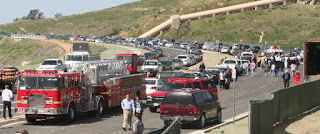 |
Newhall Ranch Road to Golden Valley Road
santaclaritacitybriefs.com |
Autotopia rebuttal
Reyner Banham's freeways are a joyous celebration of free-flowing movement. Conversely, Mike Davis's freeways and cars are the villains in the ongoing destruction of L.A.'s landscape. Mr. Bell points outs, "To be fair, in
Ecology of Fear Davis makes few direct criticism of the freeway, a surprising omission since one of the most familiar Los Angeles stereotypes is that freeways dominate. Nevertheless, Davis' implicit criticism of Autotopia is palpable."
 |
Newhall Ranch Road
Newhall, California
loopnet.com |
One of Mr. Davis's overarching themes is relentless suburbanization has wrecked Los Angeles. Mr. Bell rightly points outs, "Suburbanization could not be accomplished with first supplying a conduit to transport anti-urbanites between the outlying bedroom communities and L.A.'s polycentric job centers. Hence, the freeway systems was was born. As suburbs continued to develop farther from L.A. proper, more freeways were to connect the periphery and core."
Mike Davis points to Newhall Ranch in Valencia to support his anti-freeway expansion thesis. To accommodate the proposed 70,000-person suburb, developers proposed enlarging Highway 126 to eight lanes. This development eventually
consumed a substantial amount of already scarce open space, according to Mr. Davis. Further,
...the development's proposed 25, 000 housing units are to be built atop an agricultural flood plain that was home to state-protected endangered species that had to be relocated. (Davis, 86-7)
 |
Newhall Ranch Road and Copperhill
Photography by Konrad Summers
flickr.com |
Mr. Davis argues that this example of freeway urbanism is part of a greater development pattern that has destroyed the region's already disappearing natural environment. Additionally, in considering the freeway system and the necessary street-level support facilities, the affect of Autotopia is more alarming. Mike Davis wrote,
The automobile (has) devoured exorbitant quantities of prime land. By 1970 more than one third of the surface area of the Los Angeles region was dedicated to the car: freeways, streets, parking lots, and driveways. (80)
To sum up this section, Reyner Banham's freeways signify freedom, a notion rejected by Mike Davis. In Mr. Davis's view, the freeways are a form of totalitarianism. Freeways cut through neighborhoods and displaced families. They are divisive, a tool for obliterating the Los Angeles landscape. Jonathan Bell writes, "If one were to merge Davis' and Banham's interpretation of Autotopia, the freeway system would be an unforgiving disciplinary machine."
Both
Los Angeles: The Architecture of Four Ecologies and
Ecology of Fear: Los Angeles and the Imagination of Disaster present alternative histories of Los Angeles. In laying out the histories, several tried and true stereotypes emerged. The authors bring their own agendas to the work, intended to either justify or pierce through the hype. This is a limited critical analysis, at best. Perhaps, a synthesis of both works would bring a more sober and holistic perspective of the city. Something that could offer planners a critical interpretation of Los Angeles urban life and space use which could inspire new urban planning directions. Reyner Banham book is quaint in a civic booster sort of way while Mike Davis's book bolsters his urban dystopia thesis. Either way, they offer two very different perspectives of Los Angeles written at critical times in the city's history and provide a guide to the future.
